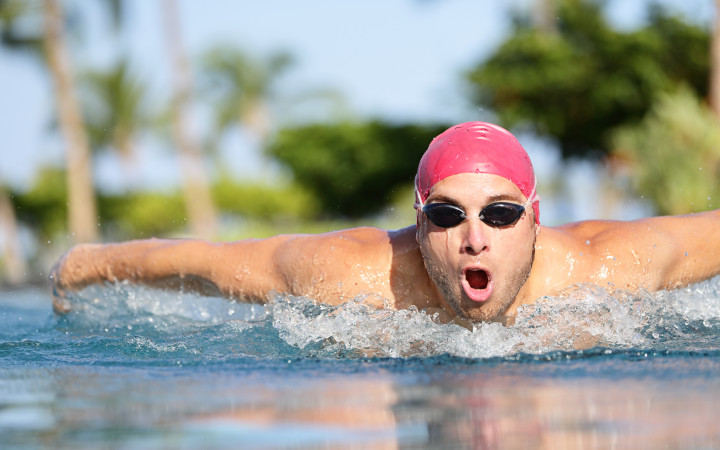Today’s Wonder of the Day was inspired by Chintan. Chintan Wonders, “how were swimming strokes invented” Thanks for WONDERing with us, Chintan!
The Earth’s ocean, rivers, and lakes are full of excellent swimmers. You might immediately think of fish, dolphins, or whales. Of course, sea turtles, penguins, and otters are also strong swimmers. But only one animal on Earth has turned swimming into a competitive sport--humans.
Have you ever watched or taken part in a swim competition? If so, you know each event is dedicated to a specific swimming stroke. Have you ever WONDERED where the strokes came from? When were they invented? What makes each swimming stroke unique?
Some swimming strokes go back quite a long time! In fact, ancient cave paintings show people using the breaststroke. That’s a style of swimming in which a person moves their arms in an arc from straight in front of them to their sides and then beneath their chest. They move their feet inward and backward by kicking, much like a swimming frog.
The butterfly stroke grew from the breaststroke. The stroke’s arm movement was developed around 1930. In the butterfly, the arms move in an hourglass shape from in front of the swimmer to below their chest and toward their hips.
The butterfly stroke’s leg motion came about around the same time, but separately. A swimming enthusiast named Volney Wilson studied how animals swim. He was inspired by dolphins, so he started swimming by holding his legs together and moving them up and down. This became known as the dolphin kick.
Later, the dolphin kick was combined with the butterfly arm movement to make today’s butterfly stroke. Japanese swimmer Jiro Nagasawa made the butterfly stroke popular when he set a world record with it in 1945.
No one is sure just how old the front crawl, or freestyle, is. It started in South America a long time ago and spread to England in 1873. When swimmers do a front crawl, they move their arms from straight ahead to near their hips before pulling them back above water. They do so while kicking their legs in up and down movements, with feet pointed. Today, the front crawl is the fastest swimming stroke. It’s called “freestyle” because it’s the stroke most often chosen in freestyle competitions, likely because of its speed.
How about the backstroke? It grew out of experimentation by swimmers after freestyle became an Olympic competition in 1896. The backstroke is an upside-down version of the front crawl. It became its own Olympic competition in 1900. The front crawl, breaststroke, backstroke, and butterfly are all used in competitions. However, other strokes exist for leisure swimming, including the sidestroke.
Are you an expert at any swimming strokes? How about the doggy paddle? The back float? Maybe you stay out of the water altogether. Whatever your comfort with swimming, competitions can be a lot of fun to watch. And of course, a day of learning at the pool is pretty great, too!
Standards: CCRA.L.3, CCRA.L.6, CCRA.R.1, CCRA.R.2, CCRA.R.4, CCRA.R.10, CCRA.SL.1, CCRA.SL.2, CCRA.W.2, CCRA.L.1, CCRA.L.2




